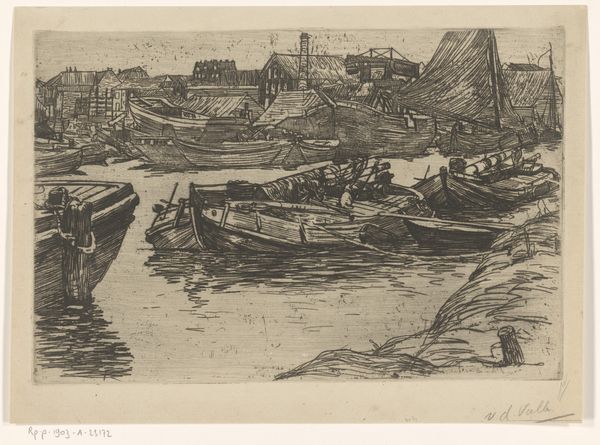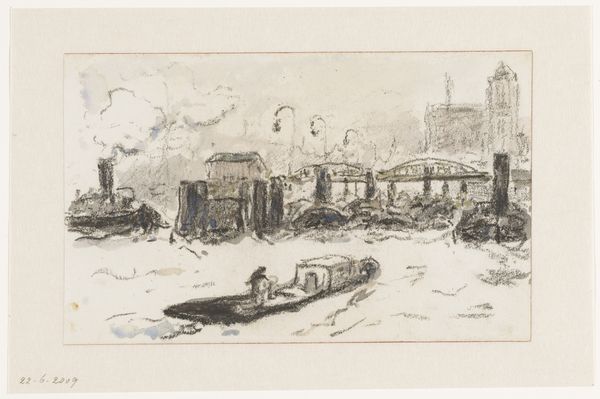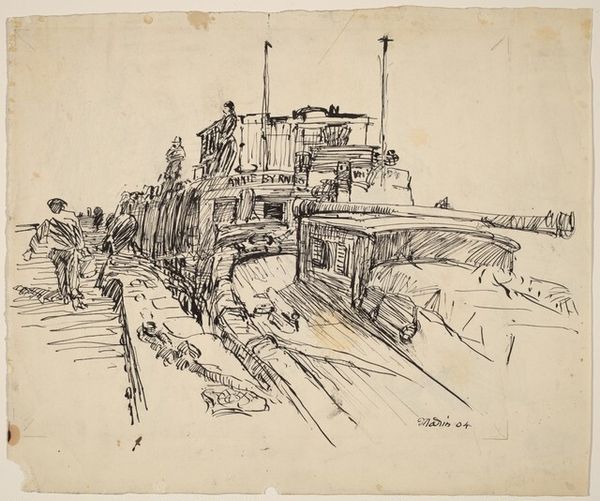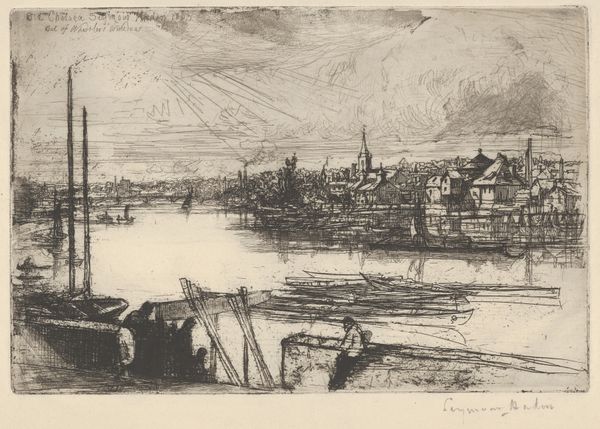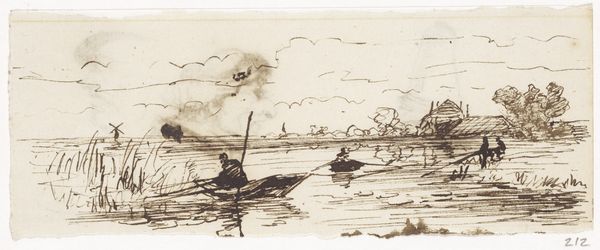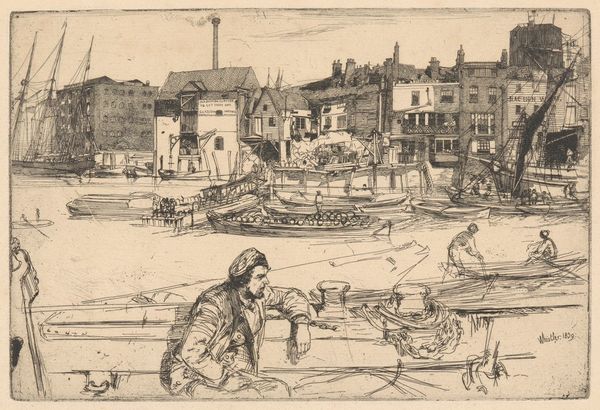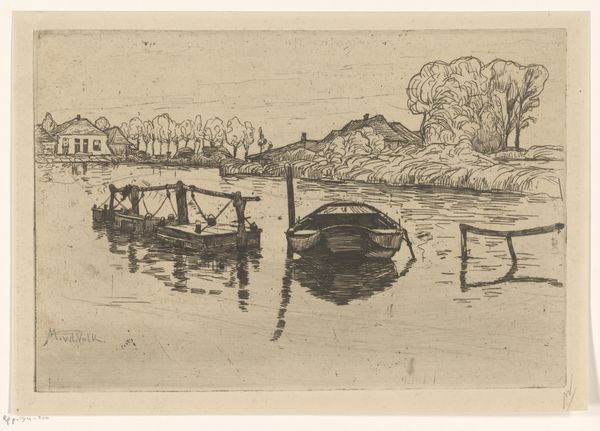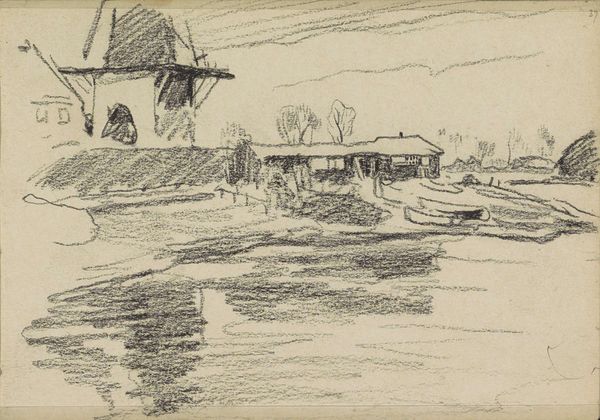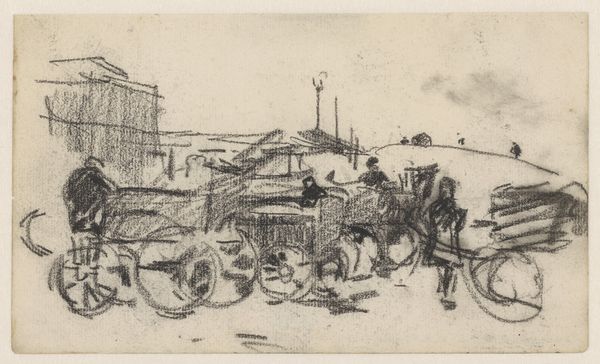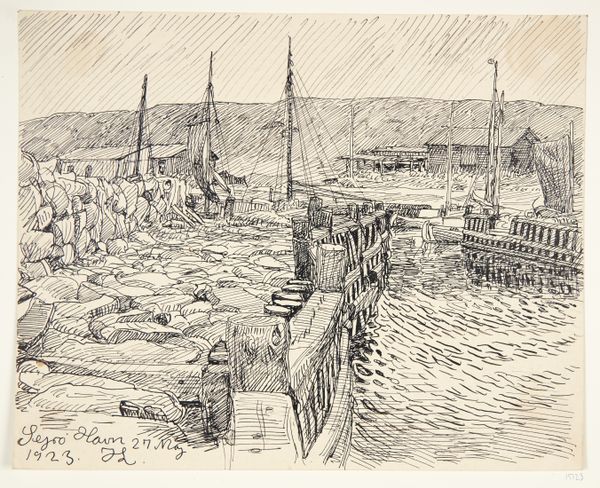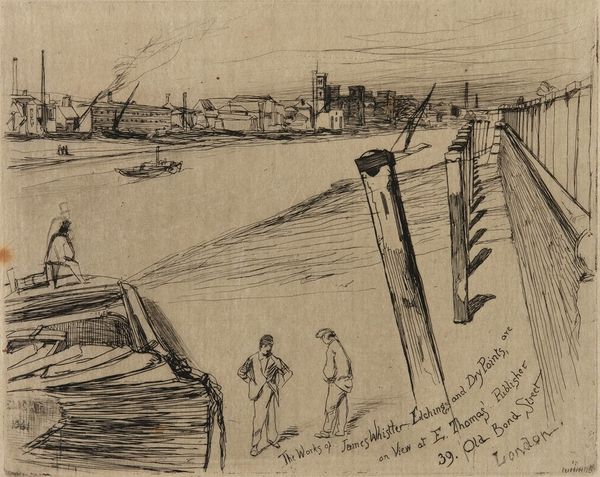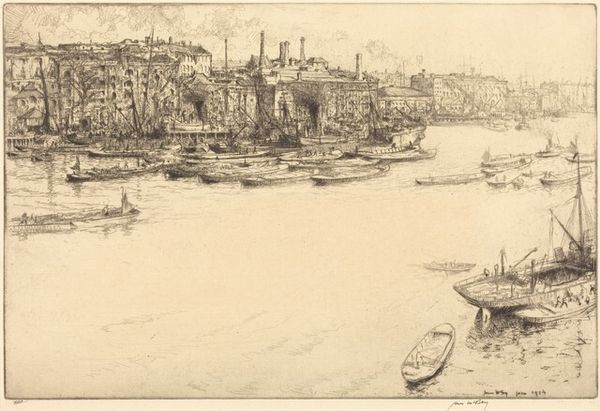
Dimensions: height 402 mm, width 617 mm
Copyright: Rijks Museum: Open Domain
Editor: Pieter Dupont's "Gezicht op de oever van de Seine," a pencil drawing from the late 19th or early 20th century, offers a detailed view of a working river. There's almost a palpable sense of industry here, the heavy barges and the workers along the shore. What's your interpretation of this piece, especially considering its historical context? Curator: It strikes me as a potent commentary on industrialization's impact on the urban landscape. Dupont presents the Seine as a site of labor, not leisure. The steam rising from the factory chimney isn't picturesque; it's a symbol of the forces transforming Paris. Notice how the artist contrasts the burdened horses with the figures on the pleasure boat; who do you think is seeing the Seine "correctly"? Editor: I hadn't considered that contrast so directly. The pleasure boat seems almost out of place against the backdrop of heavy industry. Is Dupont perhaps making a statement about the different experiences within the same urban space? Curator: Precisely! He’s highlighting the social divisions that arose with rapid industrial growth. Think about the public perception of these industrial waterways; were they celebrated for their contribution or condemned for their pollution and the changes they brought? The image likely invited the viewer to reflect on the cost of progress, especially for the working class. Editor: So, viewing this drawing as more than just a landscape, we can understand it as a social commentary on the changing face of Paris and its inhabitants? Curator: Absolutely. It’s a powerful visual document, prompting us to consider the political and social dimensions embedded within seemingly straightforward scenes of urban life. The lack of clear patronage underscores the artist's probable alignment with reformist and, in many instances, socialist circles eager for municipal renovation, a more egalitarian civic life. Editor: That gives me a lot to think about regarding the artist's intention and the artwork’s role as a historical record. I really appreciate your highlighting the societal divisions reflected in Dupont’s choice of imagery. Curator: And I appreciate you prompting me to see this image with fresh eyes, reflecting on how these waterways were seen by varied publics, and who saw what parts of the cities first.
Comments
No comments
Be the first to comment and join the conversation on the ultimate creative platform.
